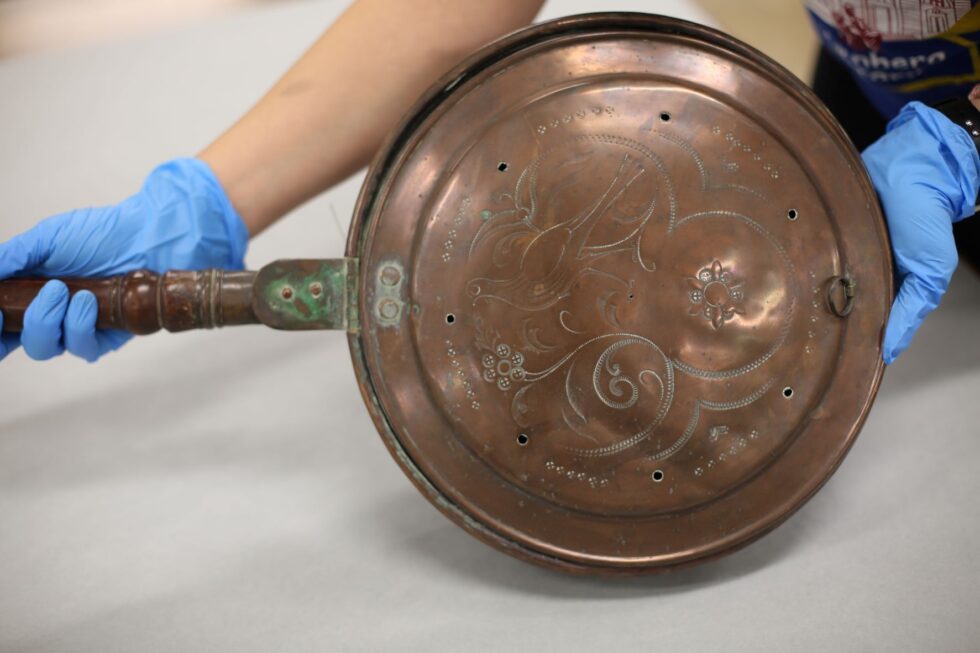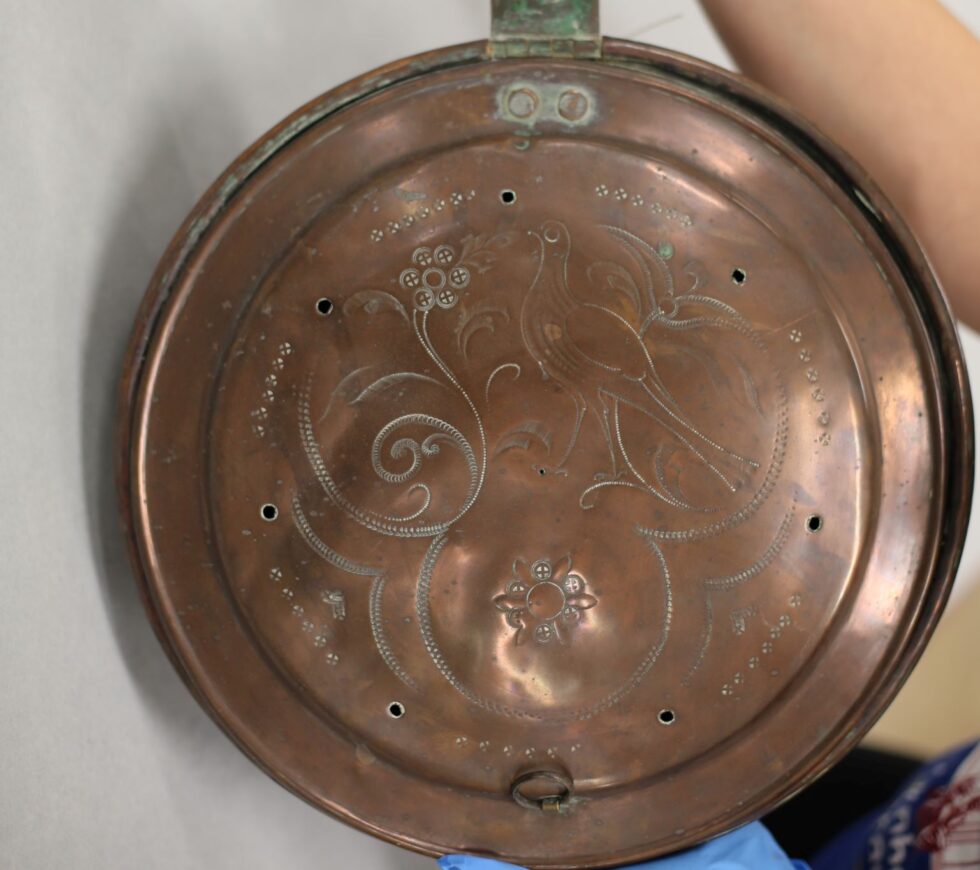Warming Pans
For most people living present day in modern homes with access to central heating systems and electric blankets, heating pads or water bottles, it’s hard to imagine living in a time during the 16th- 20th centuries where the harsh winters brought even harsher draughts throughout your home. However, by the time Queen Elizabeth I ascended to her throne (1558-1603), copper warming pans became commonly used throughout medieval residences.

Warming pans, often made of copper, would be filled with embers or hot coals and placed between the bedsheets. The long extended handle made it easy to move the warming pan between the bedsheets to keep warm. Air holes are included into the lid of the warming pans, allowing the embers or coals to burn longer and therefore keep warm throughout the night. Warming pans were a valuable family possession and would have been handed down for generations.

Salem Witch Trials
What makes the warming pan in the Rosenberg Library Museum’s collection special, is that according to tradition, it belonged to John Proctor of Salem, MA. John Proctor is important to history and specifically the Salem Witch Trials, because he was the first man to be hung and executed for witchcraft in 1692.
John Proctor was born in England in 1631 and immigrated to the Massachusetts Bay Colony with his parents roughly between the years 1633-1635, spending most of his life in the New World. The hysteria about witchcraft first began in the winter of 1692 when John was around 60 years old.

During this time, afflicted girls were experiencing bizarre symptoms such as convulsions, muscle spasms and hallucinations. A village doctor conducted that the girls were bewitched and that witches were responsible for such actions. Those accused of witchcraft were quickly and swiftly executed. While many Puritans believed witches were roaming around the village, John Proctor became skeptical of witchcraft and did not share the same beliefs. He became very outspoken by stating many of the afflicted girls were actually frauds and liars who lacked discipline, not witches.
Accusations made by John Proctor’s indentured servant, Marry Warren, falsely accused both John and his wife Elizabeth of witchcraft. During this time, they were both brought into court for questioning and examination. All claims against the Proctor’s lacked proper evidence, however; despite the lack of proof, both the Proctor’s stood trial for witchcraft. August 19, 1692 John Proctor was found guilty of witchcraft and was executed by hanging. Elizabeth was able to avoid execution because she was pregnant during this time and was able to make an escape. It wasn’t until 1711 when their names were cleared and they were found to be innocent.

There are a few reasons why the Proctor’s would have been falsely accused. First, Marry Warren was an orphan and a servant serving the Proctor family where John was known to be abusive. John was known to be violently tempered and often had altercations throughout the village. As a result, it is probable that Mary accused him out of revenge with many others testifying against him. Puritans were also known to have an intense fear of the Devil, further adding to the hysteria and confusion around how such bizarre symptoms could occur. This hysteria took the lives of 25 innocent people during the Salem witch trials. 19 people were executed by hanging at Proctor’s Ledge and the other 5 died in jail, where one was crushed to death. Prisoners such as John who were brought into questioning by the court were often tortured and endured horrific treatment which was thought to incite confessions.
The Treasure of the Month is located on the library’s historic second floor near the East Entrance. It can be viewed during regular library hours, 9:00 a.m. to 5:45 p.m. Monday through Saturday. For museum questions, call 409.763.8854 Ext. 125 or email museum@rosenberg-library.org. For press inquiries, contact the Communications Coordinator.